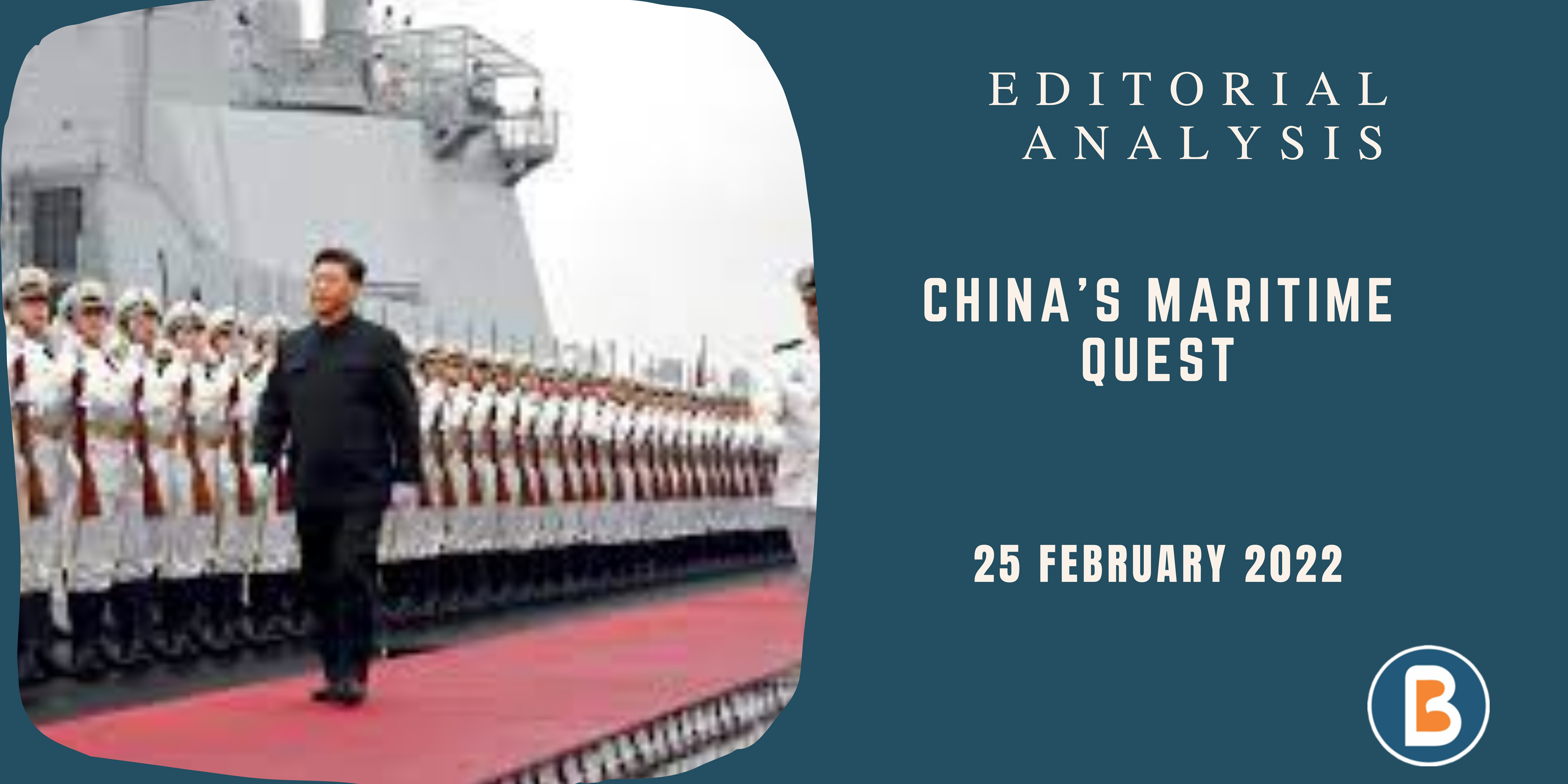China’s Maritime Quest
Context:
U.S. warship’s South China Sea passage sparks row, PLA says forces deployed to drive it away
What happened?
- A U.S. warship sailed through the South China Sea on Thursday, sparking a warning from China’s military as tensions between the superpowers remain high.
- The American Navy said the USS Benfold “asserted navigational rights and freedoms in the vicinity of the Paracel Islands, consistent with international law”.
- The Southern Theatre Command of the People’s Liberation Army said the U.S. ship had “illegally” entered what Beijing regards as its waters.
- China claims almost all of the South China Sea, through which trillions of dollars in trade passes annually, with competing claims from Brunei, Malaysia, the Philippines, Taiwan and Vietnam.
- Beijing has ignored a 2016 ruling by The Hague-based Permanent Court of Arbitration that its historical claim is without basis.
- Led by the United States, multiple Western navies conduct “freedom of navigation operations”, known in military circles as FONOPs, to assert the idea that the South China Sea is an international waterway.
What is FONOP?
- Freedom of Navigation Operations involves passages conducted by the US Navy through waters claimed by coastal nations as their exclusive territory.
- According to the US Department of Defense (DoD), the FON Program has existed for 40 years, and “continuously reaffirmed the United States’ policy of exercising and asserting its navigation and overflight rights and freedoms around the world”.
- These “assertions communicate that the United States does not acquiesce to the excessive maritime claims of other nations, and thus prevents those claims from becoming accepted in international law”.
- The US — which has not ratified the UNCLOS unlike India, China and many other countries — does regularly conduct FONOPs in the contentious South China Sea to challenge China’s aggressive territorial claims as well as in other areas including the Indian Ocean Region.
UNCLOS
- United Nations Convention on the Law of the Sea (UNCLOS) 1982, also known as Law of the Sea divides marine areas into five main zones namely- Internal Waters, Territorial Sea, Contiguous Zone, Exclusive Economic Zone (EEZ) and the High Seas.
- UNCLOS is the only international convention which stipulates a framework for state jurisdiction in maritime spaces. It provides a different legal status to different maritime zones.
- It provides the backbone for offshore governance by coastal states and those navigating the oceans. It not only zones coastal states’ offshore areas but also provides specific guidance for states’ rights and responsibilities in the five concentric zones.
Source: THE HINDU.




